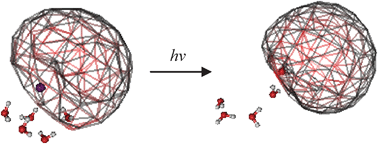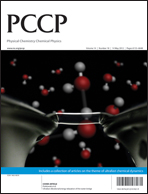Upon photoexcitation of iodide-water clusters, I−(H2O)n, an electron is transferred from iodide to a diffuse cluster-supported, dipole-bound orbital. Recent femtosecond photoelectron spectroscopy experiments have shown that, for photoexcited I−(H2O)n (n ≥ 5), complex excited-state dynamics ultimately result in the stabilization of the transferred electron. In this work, ab initio molecular dynamics simulations of excited-state I−(H2O)5 and (H2O)5− are performed, and the simulated time evolution of their structural and electronic properties are compared to determine unambiguously the respective roles of the water molecules and the iodine atom in the electron stabilization dynamics. Results indicate that, driven by the iodine–hydrogen repulsive interactions, excited I−(H2O)5 rearranges significantly from the initial ground-state minimum energy configuration to bind the excited electron more tightly. By contrast, (H2O)5− rearranges less dramatically from the corresponding configuration due to the lack of the same iodine–hydrogen interactions. Despite the critical role of iodine for driving reorganization in excited I−(H2O)5, excited-electron vertical detachment energies appear to be determined mostly by the water cluster configuration, suggesting that femtosecond photoelectron spectroscopy primarily probes solvent reorganization in photoexcited I−(H2O)5.

You have access to this article
 Please wait while we load your content...
Something went wrong. Try again?
Please wait while we load your content...
Something went wrong. Try again?


 Please wait while we load your content...
Please wait while we load your content...